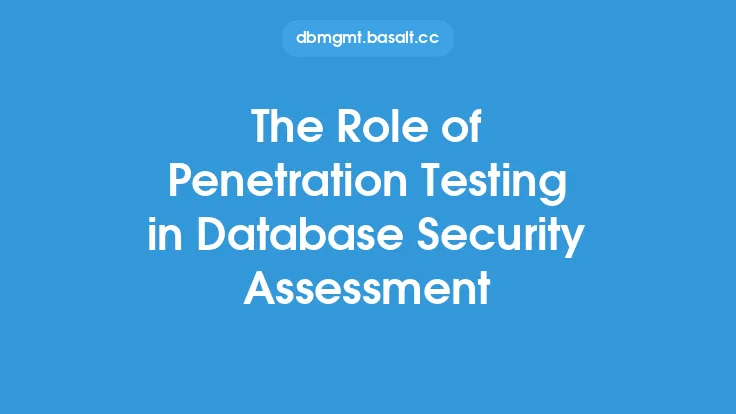Database testing is a critical component of data quality assurance, as it ensures that the data stored in a database is accurate, complete, and consistent. The primary goal of database testing is to verify that the database management system (DBMS) correctly stores, retrieves, and manipulates data, and that the data conforms to the required standards and specifications. In this article, we will delve into the role of database testing in data quality assurance, exploring the various aspects of database testing, its importance, and the techniques used to ensure data quality.
Introduction to Database Testing
Database testing involves a series of activities aimed at evaluating the quality of a database. It encompasses a range of tests, including functional testing, performance testing, security testing, and data integrity testing. The primary objective of database testing is to identify defects, errors, or inconsistencies in the database that could compromise data quality. By detecting and fixing these issues early on, organizations can prevent data-related problems that could have significant consequences, such as data loss, corruption, or security breaches.
Types of Database Testing
There are several types of database testing, each focusing on a specific aspect of the database. These include:
- Functional testing: Verifies that the database functions as expected, including data insertion, update, deletion, and retrieval.
- Performance testing: Evaluates the database's ability to handle a large volume of transactions, users, and data, ensuring that it can scale to meet the organization's needs.
- Security testing: Identifies vulnerabilities in the database that could be exploited by hackers or malicious users, ensuring that sensitive data is protected.
- Data integrity testing: Verifies that the data in the database is accurate, complete, and consistent, and that it conforms to the required standards and specifications.
- Backup and recovery testing: Ensures that the database can be successfully backed up and recovered in case of a failure or disaster.
Database Testing Techniques
Database testing involves a range of techniques, including:
- Black box testing: Tests the database without knowledge of its internal structure or implementation.
- White box testing: Tests the database with knowledge of its internal structure and implementation.
- Gray box testing: Combines elements of black box and white box testing, where the tester has some knowledge of the database's internal structure.
- Equivalence partitioning: Divides the input data into partitions based on the database's requirements, and tests each partition to ensure that the database behaves as expected.
- Boundary value analysis: Tests the database's behavior at the boundaries of the input data, such as the minimum and maximum values.
Importance of Database Testing
Database testing is crucial for ensuring data quality, as it helps to:
- Prevent data-related problems: By detecting and fixing defects early on, organizations can prevent data-related problems that could have significant consequences.
- Ensure data integrity: Database testing verifies that the data in the database is accurate, complete, and consistent, and that it conforms to the required standards and specifications.
- Improve system reliability: By ensuring that the database functions correctly, organizations can improve the overall reliability of their systems.
- Enhance security: Database testing identifies vulnerabilities in the database that could be exploited by hackers or malicious users, ensuring that sensitive data is protected.
Challenges in Database Testing
Database testing poses several challenges, including:
- Complexity: Databases can be complex systems, making it difficult to test all possible scenarios and edge cases.
- Data volume: Large databases can be difficult to test, especially when dealing with big data or high-transaction systems.
- Data variety: Databases can store a wide range of data types, making it challenging to test all possible data formats and structures.
- Limited resources: Database testing often requires significant resources, including time, personnel, and equipment.
Best Practices for Database Testing
To overcome the challenges in database testing, organizations can follow best practices, including:
- Developing a comprehensive testing plan: Outlines the testing objectives, scope, and approach, ensuring that all aspects of the database are tested.
- Using automated testing tools: Automates the testing process, reducing the time and effort required to test the database.
- Testing early and often: Tests the database early in the development cycle, and continues to test throughout the lifecycle, ensuring that defects are detected and fixed early on.
- Involving stakeholders: Involves stakeholders, including developers, users, and testers, to ensure that the database meets the required standards and specifications.
Conclusion
Database testing plays a critical role in ensuring data quality, as it verifies that the data stored in a database is accurate, complete, and consistent. By using various testing techniques, including functional testing, performance testing, security testing, and data integrity testing, organizations can ensure that their databases function correctly and meet the required standards and specifications. While database testing poses several challenges, following best practices, such as developing a comprehensive testing plan, using automated testing tools, testing early and often, and involving stakeholders, can help organizations overcome these challenges and ensure the quality of their data.





